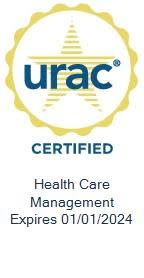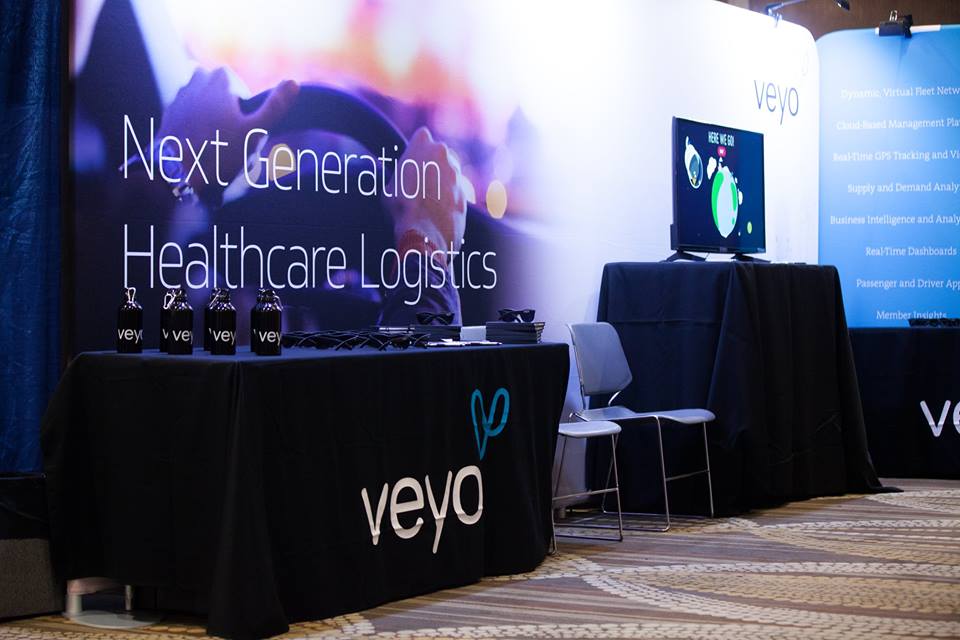Bringing on-demand rideshare to medical transport – An interview with Veyo’s President
March 9, 2017
Uber and Lyft have transformed (and largely destroyed) the taxi industry. Now startup companies like Veyo are applying similar approaches to the medical transportation field. I interviewed Veyo’s CEO, Josh Komenda to get his take.
1.How is non-emergency medical transportation (NEMT) defined? What’s included? How big is it?
Non-Emergency Medical Transportation (NEMT) is a transportation benefit for Medicaid or Medicare members who need to get to and from medical services, but have no means of transportation. NEMT provides eligible patients with trips that are non-emergency in nature, meaning there is no immediate threat to the health or life of the participant, and no elements of life support are required in the vehicle during the trip. This includes transportation to medical appointments, urgent care, or the hospital. NEMT exists to ensure that participants have access to routine and preventative care, increasing overall health outcomes and avoiding costly ambulance bills or emergency room visits and it’s especially important for those with chronic conditions such as diabetes, heart disease, cancer, COPD, or asthma. As of December 2016, just under 70 million Americans were eligible for Medicaid NEMT benefits.
2.How is NEMT provided today? What’s good and bad about the traditional model?
Today, a large majority of NEMT benefits are managed under the brokerage model. State Medicaid agencies and health plans contract with an NEMT broker to manage their NEMT benefits for them. The broker is responsible for ensuring their members have access to transportation and managing the transportation providers who perform the actual services. Brokers must manage provider procurement, provider credentialing, trip scheduling, eligibility, reporting, FWA monitoring, provider payments, etc.. NEMT benefits may cover a variety of transportation modes, including sedan, wheelchair van, taxis, stretcher cars, and mileage reimbursement. It also may include reimbursement for public transportation or long-distance accommodations such as air travel if a member requires long-distance or out-of-state treatment. NEMT benefits cover all regions from urban to rural, and transportation is always the least costly and most appropriate mode, which is determined on a case-by-case basis for each member.
Quality of service in the NEMT field is plagued by inadequate technology, outdated business models, inconsistent and unprofessional medical transportation providers, and virtually non-existent transparency for the customer. The issues stem from an overly complex, fragmented, and difficult to manage process that has not changed in decades. For example, limited communication between the broker and transportation provider means little to no data is collected around the actual trips. Important metrics like on-time percentage or customer satisfaction are often self-reported by the provider. And the fixed fleet model that traditional brokers employ leaves little opportunity for flexibility – any issues stemming from scheduling, traffic, or weather can throw off the entire system. Even with current NEMT benefits, over 3.6 million Americans still miss or delay medical care due to transportation issues.
3.What are the characteristics of NEMT users?
Those receiving NEMT benefits are often frail, handicapped, disabled, in rural areas and without smartphones. Patients may require NEMT for a variety of reasons, including: lack of a valid driver’s license, lack of a working vehicle, geographic isolation, or the inability to take traditional transportation for physical, mental, or developmental reasons.
4.Who pays? What is the role of government and private insurers?
Medicaid NEMT is a $5 billion industry, funded by state and taxpayer dollars, and overseen by the Center for Medicare & Medicaid Services. Over the past several years, Medicaid spending for NEMT equates to approximately 1% of total Medicaid expenditures.
5.Have the rideshare companies like Uber and Lyft had an impact? What has limited their effect?
Some traditional NEMT brokers have begun exploring partnerships with consumer TNCs such as Uber and Lyft, although due to credentialing and training requirements set by CMS, most trips completed by those TNCs are consumer trips based in a healthcare setting (i.e. the member or facility is paying), instead of true NEMT trips. It’s important to note that this results in a solution that is not as efficient, coordinated, or suited to healthcare as Veyo’s. Veyo’s vertically integrated model is far superior for a number of reasons. Veyo is directly connected to its own TNC supply that it controls. When a traditional broker partners with a consumer TNC, it necessarily includes an extra administrative middleman in the value chain which is less economically efficient. What’s more, Veyo directly controls and oversees all aspects of its Independent Driver-Provider (IDP) network, meaning it can directly affect credentialing, training, background checks, messaging, etc., ensuring that its network is optimized and trained specifically for its customers. In addition, it can directly monitor, track, and manage its supply to ensure it always has the right vehicles in the right places, and it can directly control matching, routing, and scheduling tactics to make sure that it solves transportation needs for all member needs in all areas.
6.What does Veyo do? How are you different or better? What barriers do you face?
Veyo is a next-gen tech solution for patient transportation. The traditional NEMT model utilizes commercial fleets that are inflexible, expensive to maintain, and managed using traditional dispatch models. These fixed fleets have a difficult time scaling when demand is high, and leave providers with a surplus of vehicles on the road when demand is low. Unlike a fixed fleet, flexible fleet models allow capacity to be rapidly scaled up and down in minutes to meet demand changes. Our dynamic supply system constantly manages and optimizes the right supply levels for different modes across geographies (both urban and rural), ensuring that every member gets picked up on time.
The Veyo Virtual FleetTM is composed of traditional transportation providers and our flexible independent driver-providers (IDPs). Our cost-effective fleet provides the safest, most reliable, on-time service possible. Veyo’s model is a complete, end-to-end NEMT solution that matches supply with demand, making it more efficient and effective, and ensuring the right vehicles are dispatched each and every time. This provides a better participant experience and more efficient use of vehicles. Launched in November 2015, Veyo is changing the face of what it means to be a non-emergency medical transportation broker by bringing this innovative ride-sharing technology to the antiquated NEMT industry.
Here is how we are different and better:
- Veyo brings innovation for the very broad needs of health plan memberships. Consumer TNCs are built to primarily serve individuals without any special needs in urban geographies. Veyo’s virtual fleet model seamlessly includes its network of IDPs (Independent Private Drivers), and traditional, specialized NEMT fleets to meet the broad array of needs from ambulatory, wheelchair, bariatric, stretcher, and other modes as required. Our IDP drivers are trained and credentialed to federal and state CMS requirements, including First Aid, CPR, HIPAA, ADA, patient sensitivity, and hand-to-hand service. We serve members in big cities, small towns, and rural areas, and use a variety of scheduling, routing, and matching techniques that are designed to get every member to their appointments on time with efficiency and high quality service no matter where they live or what their needs are.
- Veyo’s platform is designed for management of a transportation benefit. Government agencies and managed care organizations spend millions of dollars on a critical benefit that ensures their memberships can get to and from their appointment reliably. Veyo’s system is designed to bring next-generation tools to manage this benefit to ensure maximum effectiveness. Veyo supports call centers, booking portals, and member apps that verify eligibility, determine the most appropriate mode of transportation, and ensure the highest-quality access, reliable on time performance, and trackability and transparency, while employing sophisticated mechanisms to detect and prevent fraud, waste, and abuse. In addition, it can support customized eligibility criteria and steer members to alternative cost-saving modes such as mileage reimbursement and public transit where appropriate.
- Veyo is built from the ground up to be a healthcare ally and use data and technology to cut costs and improve outcomes. From basic requirements, like managing eligibility files, PHI, and providing encounter data, to more advanced dashboards, reports, caseworker/intervention alerts, and app campaigns, Veyo’s platform, data, and tools are at plans’ disposal to drive initiatives aimed at understanding their membership better and piloting new programs to drive better outcomes. More than just a basic transportation service, Veyo understands that it is part of the continuum of care, and uses its ability to interact with members and collect data to help plans make the most of their investment in NEMT.
Some barriers we are currently facing include hesitation in the market about such a new solution. Because Veyo was built on technology for the healthcare market, our model is drastically different than the traditional players in the market and our results can often seem too good to be true. As we continue to record data and results from our current markets, it allows us to prove that the Veyo model does work for the NEMT market and can make huge changes for health plans and state agencies alike. For example, in our current markets, after completing 3.4 million trips, we are seeing on-time performance percentages of 98% and an overall grievance rate of just 0.09%.
7.Where do you go from here?
We are continuing to expand our model into new states, with plans to double in size in 2017. We are continually adding new benefits and features to the Veyo model, including a member-facing app that will allow members to book and manage trips on their own schedule. In addition to managing their own trips, members will be able to manage their own information, ensuring that health plans always have the most up-to-date contact information for their member population. In addition to focusing on improving the trip lifecycle, we’re also looking for ways to better increase the transparency between health plans and their members. Wellness initiatives such as flu shot reminders and annual wellness exam reminders can be built into member-facing apps, giving health plans one more connection to their members. Our high-powered, data-oriented technology team and strategic focus allows us to reimagine many processes within the broker’s function, introduce new automation and efficiency, and provide new NEMT-specific tools and data insights for plans, agencies, and members.
—
By healthcare business consultant David E. Williams, president of Health Business Group.
The original article can be found here.


